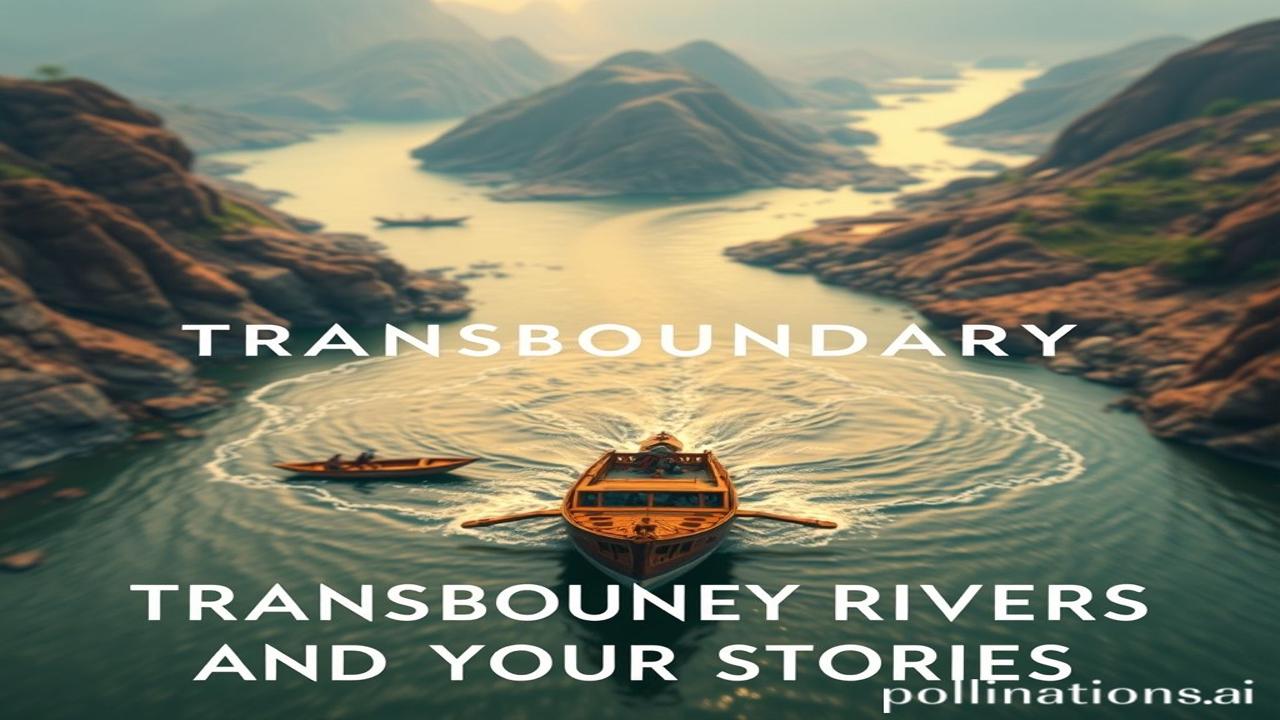बहती नदियां, बहती कहानियां: Transboundary Rivers and Their Stories
Kabhi socha hai, jab hum kisi nadi ke kinare khade hote hain, toh kitni kahaniyan uske pani mein chipi hoti hain? Kitne empires, kitne pyar, kitni dushmaniyaan… Sab uske saath beh gaye. These aren’t just rivers; they’re living chronicles, especially the transboundary rivers – the ones that flow across borders, weaving tales across nations. Aaj hum unhi rivers ki kahani sunenge.
इतिहास की धारा: A River Runs Through History
What exactly are transboundary rivers? Simply put, they are rivers that flow through or form a border between two or more countries. Think of the Indus, Ganga-Brahmaputra-Meghna (GBM), Sutlej, Teesta – rivers so vital to the lives of millions across India, Pakistan, Bangladesh, Nepal, and even China.
These rivers aren’t just about water; they are about power, politics, culture, and survival. Back in the day, control over these rivers meant control over fertile lands, trade routes, and even military advantage. Imagine the Indus Valley Civilization, flourishing because of the river Indus. From the Mauryas to the Mughals, water was always a critical factor in deciding who ruled whom.
Par, yeh kahani sirf rulers ki nahi hai. It’s also about the farmers who depend on these rivers for irrigation, the fishermen who make their living from its waters, and the communities whose cultures are intimately tied to the river’s rhythms. It’s a story etched in the landscape itself.
ज़मीनी सच: People and the Lifeblood of Rivers
Let’s imagine life near the Ganga, but centuries ago. “Ma Ganga ne aaj phir bhakt ko ashirwad diya.” A young farmer, Ramu, wakes up before dawn. He prays to Ganga Maiya for a good harvest. His day revolves around the river – irrigating his fields, fishing for his family, and even transporting goods along its waterways. Ganga is his jeevan rekha, his lifeline.
Meanwhile, across the border, another farmer, possibly called Ali, living near the Indus, is doing the same. He’s worried about the water levels, the changing rainfall patterns. He knows that if the river dries up, his family will starve. These are shared anxieties, shared destinies woven together by the same flowing water.
But sometimes, destiny takes a different turn. Think about the disputes – the Indus Waters Treaty, the ongoing discussions about the Teesta. These are not just political issues; they affect real people, their livelihoods, their future. The siyasat of water can create tension, but it can also foster cooperation.
धरोहर और पहचान: Rivers and Our Modern Identity
Even today, transboundary rivers play a crucial role in shaping our identity and culture. Ganga is not just a river; it’s a symbol of Bharatiyata, a source of spiritual cleansing, and a part of our national consciousness. Think of Kumbh Mela, where millions gather to bathe in the holy waters.
Similarly, the Indus holds immense significance for Pakistan, often referred to as the “father of rivers” and the source of their civilization. The shared cultural and historical ties linked to these rivers are undeniable, transcending political boundaries. Festivals, folk songs, rituals, and art forms all reflect the river’s influence, connecting people across borders.
मजेदार तथ्य: Did You Know?
Log samajhte hain ki the Indus Waters Treaty is a perfect agreement. Lekin asli sach yeh hai that it has faced several challenges and disputes over the years, highlighting the complexities of managing transboundary resources. The distribution of water and the construction of dams upstream are always contentious issues. And did you know, some of the oldest settlements in the world were built along the banks of these very rivers?
दृश्य और भावनाएं: The River in Our Senses
Imagine standing on the banks of the Brahmaputra at sunset. The air is thick with the scent of damp earth and blooming water hyacinth. The sounds of boatmen singing folk songs echo across the water. The setting sun paints the river in shades of orange and gold. It’s a breathtaking scene, a testament to the river’s beauty and power. The river feels ancient, a silent witness to the ebb and flow of human history.
अंतिम विचार: Lessons from the Flow
Transboundary rivers are more than just geographical features; they are arteries that connect cultures, economies, and histories. They remind us that our destinies are intertwined, that cooperation is essential for survival. As the saying goes, “Jal hi jeevan hai” (Water is life). Let’s learn to share, protect, and cherish these rivers, so their stories continue to flow for generations to come.
“नदी का बहना ही जीवन का सार है; रुक गई तो कहानी ख़त्म.”
